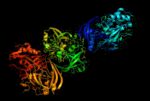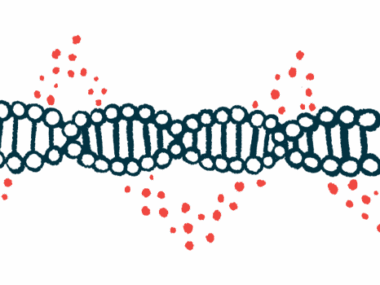Study Reveals Genetic Makeup of CMT Patients in Central South China
Written by |

Genetic analysis conducted by researchers in China has advanced the understanding of Charcot-Marie-Tooth (CMT) disease and related disorders, a study suggests.
The analysis revealed a relatively higher proportion of those with subtype CMT2 and a lower occurrence of PMP22 gene duplication, a common genetic defect linked to the condition, in CMT patients in central south China.
The analysis, “Genotype and phenotype distribution of 435 patients with Charcot–Marie–Tooth disease from central south China,” was published in the European Journal of Neurology.
More than 100 genes are currently known to cause CMT, a group of inherited conditions characterized by damage (neuropathy) to the peripheral nerves that extend from the spinal cord to the arms and legs and that control muscle movement and sensation.
There are different types of CMT as well as a wide range of disease characteristics. CMT type 1 (CMT1) refers to neuropathy caused by injury to the myelin sheath that surrounds nerve fibers, and symptoms include muscle weakness and shrinkage, or atrophy, as well as reduced sensation in the hands, forearms, feet, and lower legs.
CMT type 2 (CMT2) results from damage to nerve fibers directly and has similar symptoms seen in CMT1 but different degrees of disability and variation in the age of symptom onset. Motor nerve conduction velocity ━ the speed of electrical impulses ━ is slower in CMT type 1 than in type 2.
Studies examining the relationship between the genetic defects (genotype) and disease characteristics (phenotype) in CMT patients have been conducted in the U.S., Europe, and Japan. China has also investigated this relationship, but given its large population and vast geographical area, additional studies investigating patients in different regions are needed.
“In this study, the genotypes and phenotypes identified in a [group] of 435 CMT patients from central south China are described,” the researchers, based at Central South University in China, wrote.
A total of 216 participants (49.7%) were diagnosed with CMT1, and 178 (40.9%) had CMT2. The remaining enrolled patients had different but related neuropathic disorders. Among these, 24 (5.5%) had distal hereditary motor neuropathy (dHMN).
According to the scientists, the ratio of CMT1 to CMT2 in their study was significantly lower than found in Western CMT populations except Norway.
CMT patients and families underwent neurological examinations, and blood samples were collected for DNA analysis. Disease severity was assessed based on a CMT neuropathy score (CMTNS), in which disease was classified as mild for CMTNS of 10 or less, moderate for CMTNS between 11 and 20, and severe for scores over 20.
Analysis of inheritance indicated 50.8% of cases were sporadic, as they had no known family history of the disease. In comparison, 35.9% were autosomal-dominant (one defective gene copy from one parent), 2.5% were autosomal-recessive (two faulty genes from two parents), and 10.8% were X-linked inheritance (faulty genes on the X chromosome).
The age of CMT onset ranged from 1 to 60 years, with 17.7% of patients experiencing onset in infancy, 52.2% had childhood- or adolescent-onset, and 30.1% had adult-onset.
Duplication of the PMP22 gene — the cause of CMT1A — seen in 19.6% of patients, was the most common genetic defect, followed by mutations in the GJB1 (13.5%), MFN2 (10.1%), and MPZ (5%) genes. Other changes were found in the PMP22, SH3TC2, GDAP1, IGHMBP2, MORC2, HSPB1, and SORD genes.
“A relatively lower occurrence of PMP22 duplications was observed in north China and central south China compared with southeast China and Taiwan,” the team noted.
For age of disease onset, PMP22 duplication accounted for a similar proportion in different age groups. GJB1 and MFN2 mutations occurred more frequently in infantile-onset as well as childhood- or adolescence-onset disease. MPZ variants were seen in infantile- or late-onset cases, and IGHMBP2 defects were found only in infantile-onset patients.
Twenty previously unreported genetic variants in eight CMT genes were identified in 15 families. Among these, two were found in the MPZ gene, with one patient characterized as moderate CMT1 with infantile-onset (CMTNS of 16) and the other with adult-onset mild CMT (CMTNS of 7). Two MFN2 defects were seen in two sporadic CMT2 cases and were associated with childhood-onset disease (CMTNS of 6 and 16).
One of the novel GJB1 gene mutations was found in five patients of a dominant CMT1 family and was associated with childhood-onset, mild to moderate neuropathy (CMTNS from 5–16). Eight defects in IGHMBP2 were detected in four infantile- and childhood-onset CMT2 cases with CMTNS ranging from eight to 24.
Genetic defects that caused CMT1 were found in the genes PMP22, CH3TC2, NEFL, FGD4, PRX, EGR2, C1ORF194, and GNB4. Genes underlying CMT2 included MFN2, GDAP1, IGHMBP2, MORC2, HSPB8, AIFM1, BAG3, and SPTLC1. Changes in the GJB1 and MPZ genes caused both CMT type 1 and 2, while HSPB1 and SORD gene variants were implicated in type 2 as well as in dHMN patients.
A de novo variant — arising from a spontaneous mutation in a germ cell (egg or sperm) — was seen in the SPTLC1 gene of a CMT2 patient who had infantile-onset disease, excessive joint mobility, short stature, an underweight body, and impaired nerve impulses. The patient’s CMTNS was 18.
A previously reported BAG3 defect was found in a childhood-onset CMT2 case, with slightly reduced nerve conduction and no further evidence of heart damage, but a slightly elevated level of creatine kinase, a marker for muscle damage. This patient’s CMTNS was 7.
“Our study provided a unique genotype-phenotype landscape of patients with CMT and related disorders from central south China, including a relatively high proportion of CMT2 and low occurrence of PMP22 duplications,” the investigators concluded. “The broad phenotype spectra in certain genes have advanced our understanding of CMT.”







